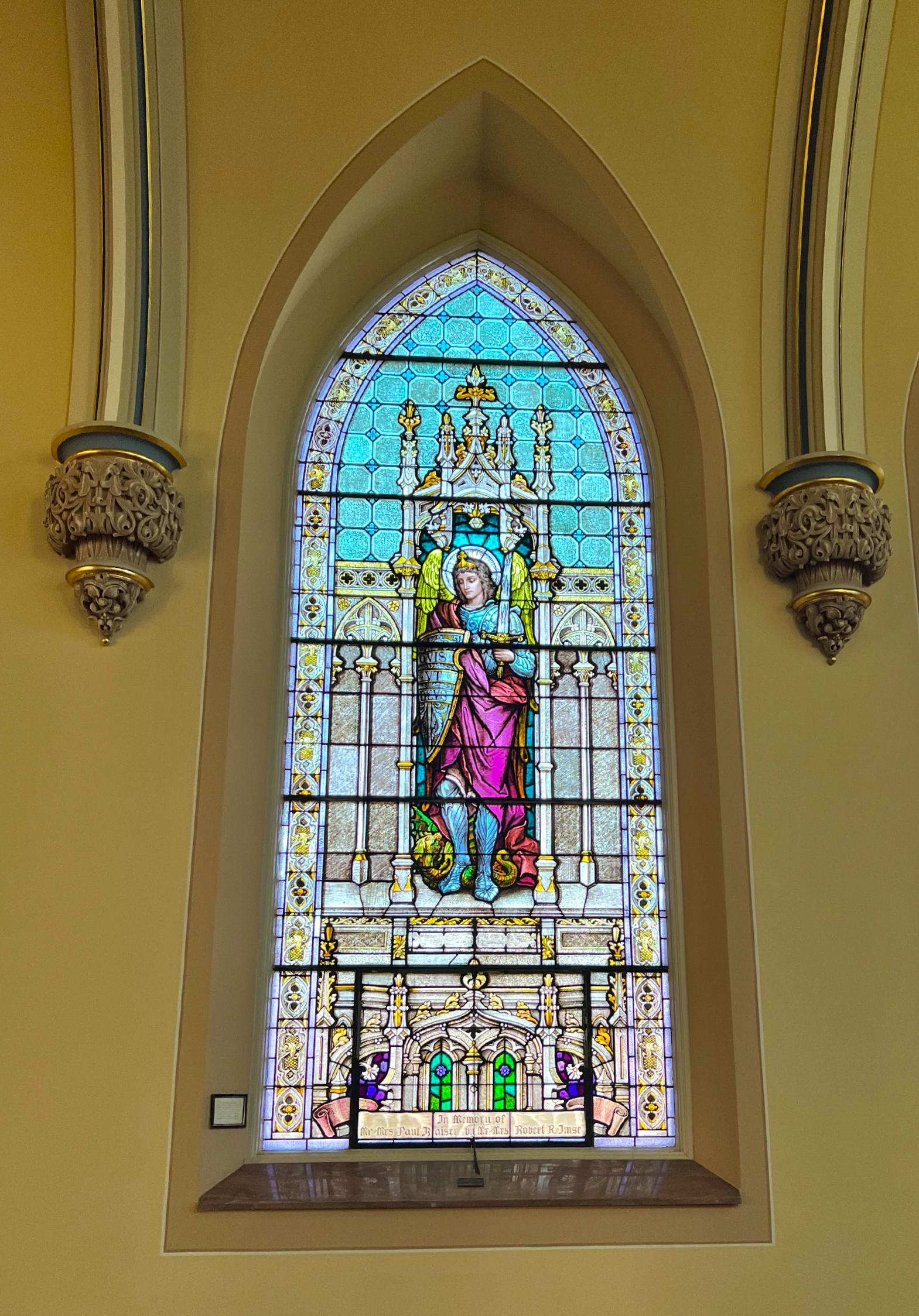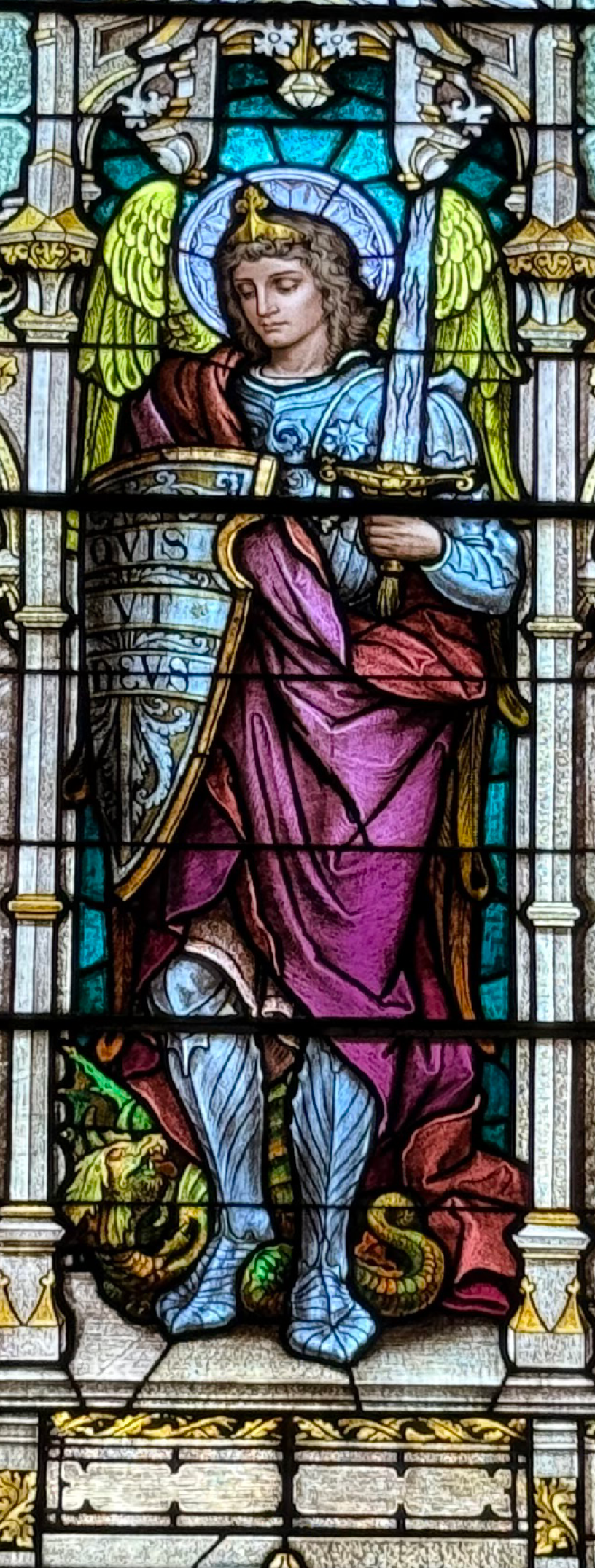
Michael is a popular archangel among Christians. According to Revelations 12 he led the heavenly army against Lucifer before the creation of the world. According to a very old belief it is Michael who receives the souls of the departed. In the calendar of the church he is remembered on September 29. St. Michael and All Angels Day.

In honor of Mr. And Mrs. Paul Kaiser by Mr. and Mrs. Robert R. Imse


